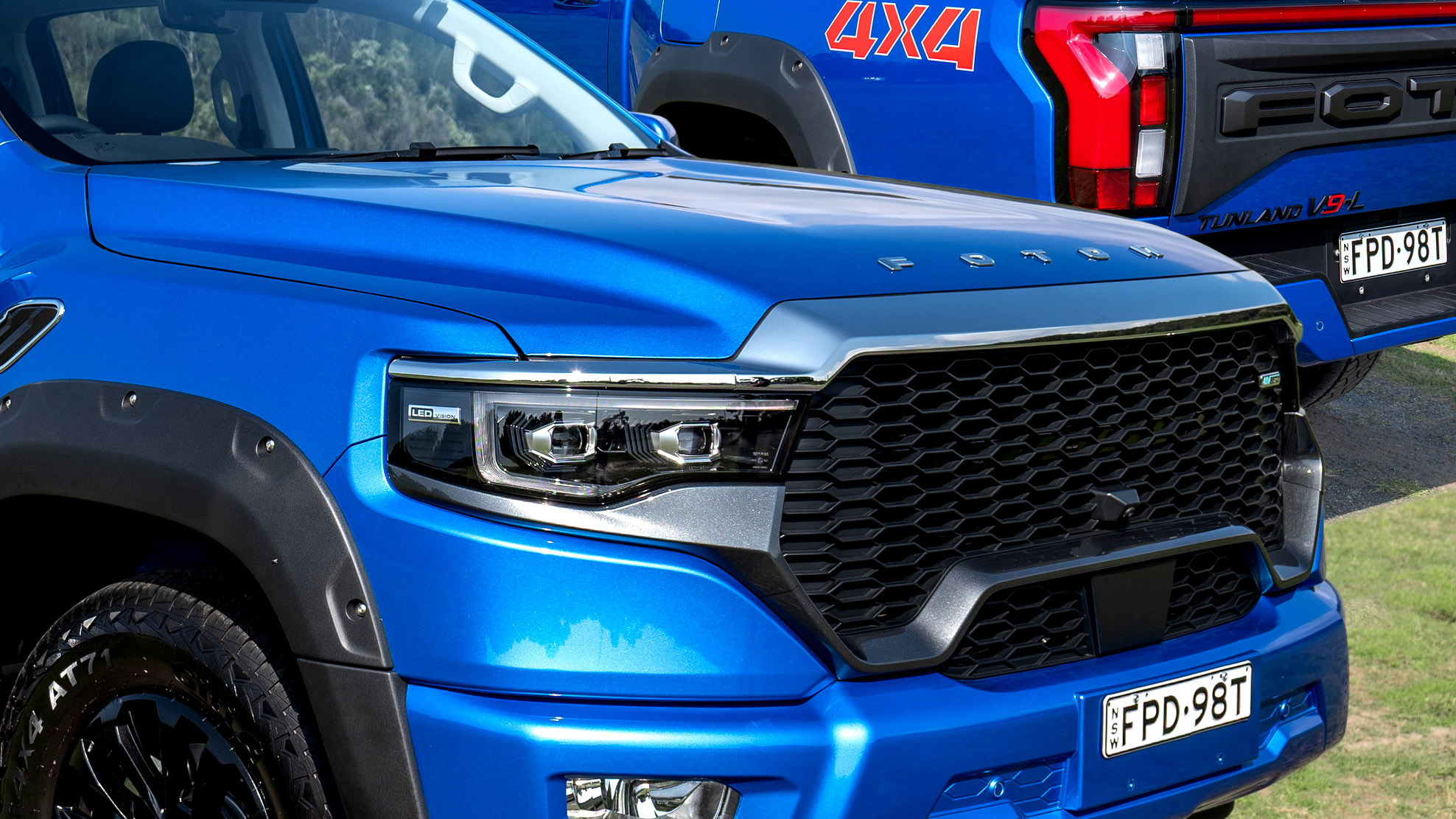The new Foton Tunland V9 blends American full-size truck styling into a sleek midsize package
Australians have always had a soft spot for midsize pickups, which remain the country’s best-selling vehicles by a wide margin. So, when Chinese automakers spotted the opportunity, they moved fast to challenge long-time favorites like the Ford Ranger and Toyota Hilux with a flurry of new models.
More: Australia Gets A Ranger Raptor Pack Too Wild For Anywhere Else
One of the many contenders Foton , which has just rolled out its Tunland truck in Australia, sporting a design that seems to have borrowed a few too many pages from the playbook of American full-size pickups, and not just one, but two of them.
The Tunland first surfaced in 2011, but this latest generation appeared in 2023. The range splits into two versions, the V7 and the V9, called the Mars 7 and Mars 9 in China, each with its own front-end design. Foton describes the V7 as “built for work” and the V9 as “built for adventure”.
Looks Familiar?
The entry-level V7 sports headlights and taillights that bear a strong resemblance to those of the Ford F-150, while the sculpted side profile gives off Toyota Hilux energy. It also carries a huge grille, a raised hood, and broad rear haunches reminiscent of the Ford Ranger Raptor.
Things get more blatant with the Tunland V9. Its face looks unmistakably like that of a Ram 1500, so much so that a Ram badge would not seem out of place. The side and tail treatments echo the V7’s, though the V9 gains bolt-on wheel arch extensions and a sports bar.
Inside, both trucks take a step away from workhorse territory. Perceived cabin quality leans toward the premium end, with a 12.3-inch digital instrument panel, a 14.6-inch touchscreen, and leather upholstery all standard. Foton also fits a full ADAS suite.
The flagship V9-S 4×4 takes things up a notch with heated and ventilated seats, heated outboard rear seats, a 256-color ambient lighting, dual-zone A/C, wireless charging, and a panoramic sunroof.
Chassis and Powertrains
Both versions share the same footprint: 5,617 mm long, with a 3,355 mm wheelbase, 240 mm of ground clearance, and a tray measuring 1,577 mm in length. However, the V9 is slightly wider at 2,090 mm (82.3 inches) due to the extra plastic cladding.
Built on a traditional ladder-frame chassis, the V7 uses leaf springs at the rear while the V9 adopts a multi-link setup for improved ride comfort. Each can tow up to 3,500 kg, with payloads ranging between 995 kg and 1,115 kg depending on trim, pretty much in line with rivals in the midsize truck segment.
Review: China’s GWM Cannon Alpha PHEV Impresses With Power But Trips Over Small Details
Power comes from a 2.0-liter four-cylinder turbodiesel equipped with a mild-hybrid 48V system. Developed in collaboration with UK engineering firm Ricardo, the engine produces 161 hp (120 kW/163 PS) and 450 Nm (332 lb-ft) of torque.
Drive is handled by a ZF eight-speed automatic. All variants except the base V7 use a four-wheel-drive layout, while that entry model sticks with rear-wheel drive.
Budget-Friendly Pricing
The Tunland marks Foton’s return to the Australian market after a less successful attempt back in 2012.
Pricing starts at AU$39,990 and rises to AU$42,990 for the V7, while the more upmarket V9 ranges between AU$45,990 and AU$49,990. The pricing puts it firmly in reach of buyers watching their budgets.
Foton joins a growing group of Chinese challengers already on sale Down Under, including the GWM Cannon Ute, JAC T9, MGU9, and BYD Shark 6. Each is vying for attention in a fiercely loyal market long ruled by the Ford Ranger, Toyota Hilux, Mitsubishi Triton, Isuzu D-Max, Mazda BT-50, Volkswagen Amarok, and the upcoming Nissan Navara.
Google News
MSN Start
Thanos Pappas, a product design engineer by trade, has been wading through automotive journalism for… Read full bio











